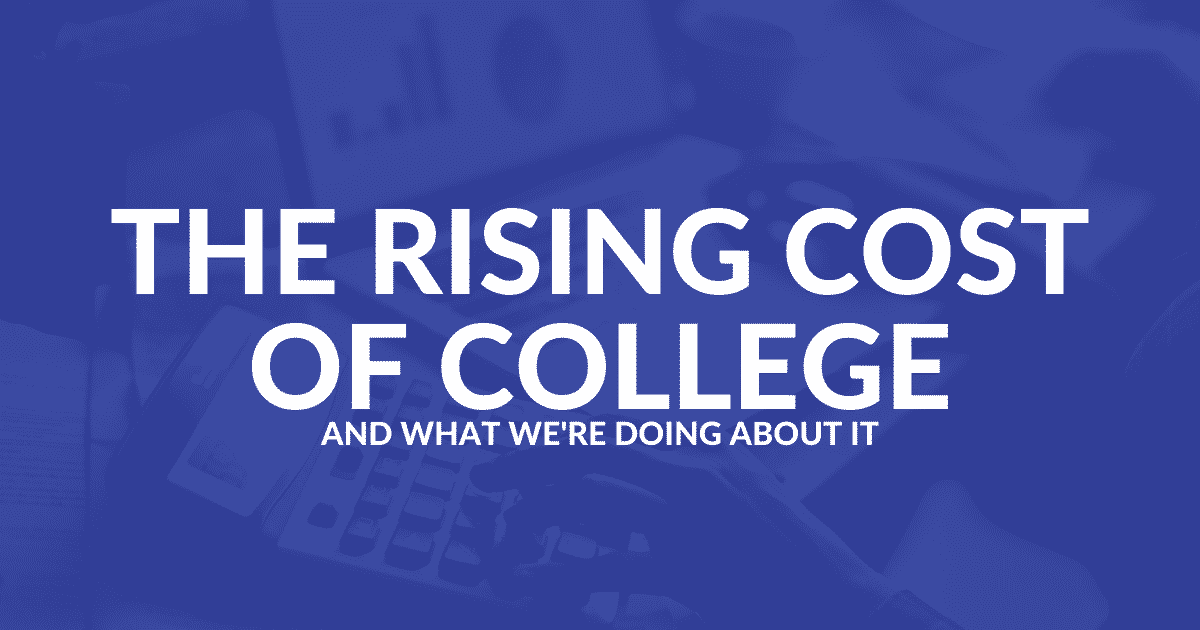The cost of attending college continues to rise, even in the midst of a pandemic. And yet, grants and scholarships haven’t kept up. That makes college for most students unaffordable without student loans.
While student loans are beneficial, they still need to be repaid. This creates significant financial risk and becomes a barrier for too many, particularly underserved and first-generation students.
At Hildreth Institute, our mission is equity in higher education. We work to dismantle our current student loan system and democratize higher education. We do this through interventions that address existing opportunity gaps that perpetuate achievement gaps.
In a forthcoming study by the Hildreth Institute funded by Michelson 20MM Foundation, we found that although created with the best intentions, many affordability initiatives fail to target those who need financial aid the most. That research was the foundation of our sister organizations, “2020 Inversant Cash for College Fund.”
We’re thrilled to support this initiative as we know the struggle Inversant families are facing during the COVID-19 pandemic. Certainly, the fund alone won’t fix the systemic inequities baked into our higher education financial aid system. But, we can help those who need it most.
Here’s how Hildreth Institute’s research informed Inversant and why it was critical to launching this fund right now.
1. Reducing the Financial Burden
Working in underserved communities for the last 10 years, Hildreth and Inversant have seen first-hand that students and their families have to make tough decisions to afford their college dreams.
Many students choose to lower their career aspirations or delay their education hoping to reduce costs. Others work excessively alongside their studies having to attend part-time.
But research shows that these decisions, such as delaying college, working long hours, and attending part-time are all associated with the risk of dropping out.
In fact, only 11 percent of low-income, first-generation students graduate with a bachelor’s degree. This is after six years versus 55 percent of their wealthier peers in the same time frame.
When these risk factors combine with borrowing, the worst-case scenario happens far too often. Students get stuck with no degree, but lingering debt to repay.
The Inversant fund seeks to help students stay in college, graduate on time, and earn that degree with the Fund.
2. At-Risk Students Need More Help Than Ever
Many traditional affordability initiatives leave out students who need financial aid the most. Their eligibility requirements reward traits associated with a higher likelihood of graduation, such as full-time attendance or enrolling in college right after high-school.
In their study, Hildreth Institute also found that the new wave of tuition-free college programs hasn’t been that effective. Although they can be more lenient about eligibility requirements, their allocation method is regressive, benefiting low-income and high-risk students the least.
Also, their limited focus on covering tuition and fees, which represent only a fraction of the total cost of attendance, fails to address the burden of the extra expenses students encounter beyond the college bill.
That’s why Inversant’s Cash for College Fund takes the full cost of attendance into consideration to assess students’ real unmet needs.
3. Unexpected Expenses Trip Students Up
Studies show that many students get tripped up by unexpected expenses unaccounted for in the college bill. The problem with this is that students are then stuck with costs not covered by existing financial aid.
The College Board estimates that these other expenses (beyond, tuition, fees, room and board, books and supplies, and transportation) amount up to an average of $ 2,137.
Students who face these unexpected expenses end up borrowing more too. Because of this, they often have to resort to private loans that are riskier with higher interest rates. That or they choose to work more, which puts them at further risk of dropping out and being unable to repay their debt.
There are important socio-economic, racial, and gender equity implications to consider as well. A growing body of research shows that student debt disproportionately burdens low- and middle-income households, Black and Latinx communities, and women.
Borrowers of color and those coming from financially vulnerable households are experiencing higher debt burden, higher delinquency, and default rates.
With their new fund, Inversant commits to helping these at-risk students cover unexpected expenses and ensure they’re able to realize their college dreams.
The Cash for College Fund is Now Open!
The Cash for College Fund is open to eligible students who are Massachusetts residents. Even if attending a school out of state, students might still be eligible.
Eligibility Requirements:
- Resident of Massachusetts
- Enrolled in an accredited higher education institution (Even if out of state)
- Have an Expected Family Contribution (EFC) of $10,000 or less
- Demonstrate an unmet need
Inversant will grant 10 high-risk students an award of up to $2,500. This will help cover the unexpected costs that we know can have them take on more debt, or worse, derail their degree.
The Cash for College Fund is here to help:
- Reduce the financial burden to increase retention
- At-risk students bridge the gap between student aid and financial responsibilities
- Cover unexpected expenses that would result in excessive borrowing or working
The application process is to assess the unmet needs of applicants while detecting and prioritizing students at risk of experiencing financial distress and of dropping out.
